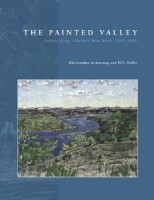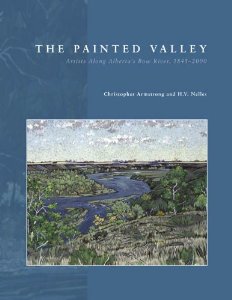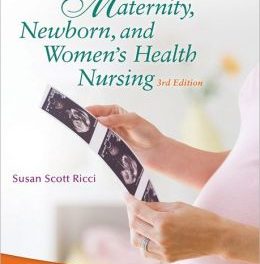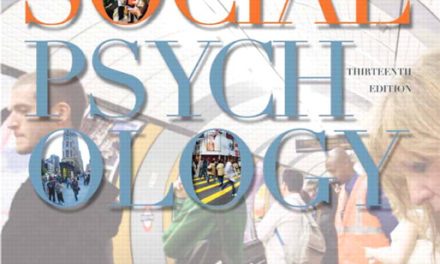 Authors: Christopher Armstrong and H.V. Nelles
Authors: Christopher Armstrong and H.V. Nelles
Publisher: University of Calgary Press – 160 pages
Book Review by: Sonu Chandiram
How do you select art to feature in a collection like Painted Valley created over a period of more than a century and a half, from 1845 to 2000? That would be an almost impossible task for anyone, but Christopher Armstrong and H.V. Wells, who describe themselves as environmental historians rather than art critics, have done exactly that.
Let us find out what criteria, filters and screens they used even if purely subjective in nature, to choose the 80 items of art – 64 color plates and 16 black-and-white illustrations from the “hundreds” (the authors’ words) of works found in Alberta museums and national collections which depict the Bow River and its valleys – to show and comment on in this large 8.5” x 11” book.
Often these art works are not on display in museums and galleries but on racks in storerooms or packed away in acid-free boxes.
We found the answers. They write:
“We came upon our subject wanting – perhaps mistakenly – to use art to see the river. Instead we have come to use the river to see art. In the pages that follow we hold the subject matter – the river and the valley – constant to observe changes in artistic movement over time.
“Amid the ongoing struggle to capture a challenging landscape to paint, we also observe the arrival in this locale of different styles of painting, and the effort to establish a distinctive regional aesthetic.”
They asked questions such as: How had human inhabitants of the valley come to know the valley and accommodated it in their lives? How had perceptions of the river by people changed over time?
The authors not only searched places where drawings and paintings are found, but also in archives, government records, libraries and newspapers – where historians gather information.
Among the museums they searched were:
- The Glenbow Museum and Gallery in Calgary
- The White Museum of the Rockies in Banff
- The Edmonton Gallery
- The Alberta Foundation for the Arts in Edmonton
- The University of Alberta art collection
The 16 black-and-white illustrations of the Bow River and surrounding valleys featured in this collection are grouped together in the following manner, interspersed with text descriptions and commentary:
- Encounters with the Valley
- Easels Along the Bow
- Imperial Topographers
- Railway Romantics
- The Long Shadow of Impressionism
- Seeing the Valley as Home
- Modernism and After
- The Power of Landscape
The 64 color plates are found at the end of the book on coated semi-glossy paper for production requirements in printing and binding.
The Bow River runs from its origins northwest in the Rocky Mountains in Canada down east to the city of Calgary, then southeast to the prairies. Its natural beauty and dramatically changing scenes over the seasons have attracted artists through the generations to capture its varied looks, often termed “moods.”
At least three approaches have been represented in choosing the art shown in this book:
- Artistic styles
- Historical periods
- Points of view
This beautiful, high quality book is an excellent resource for art works on the Bow River amidst the Canadian Rockies and adjoining valleys. It is a product of extensive research, thoughtful insight and incisive writing. We commend the authors for an outstanding job.
Christopher Armstrong is Professor Emeritus in the department of history at York University.
H.V. Nelles is the L.R. Wilson Professor of Canadian History at McMaster University and Distinguished Research Professor Emeritus at York University.
Both have written and published extensively on Canadian history and are widely recognized as two of the foremost scholars in the field.







